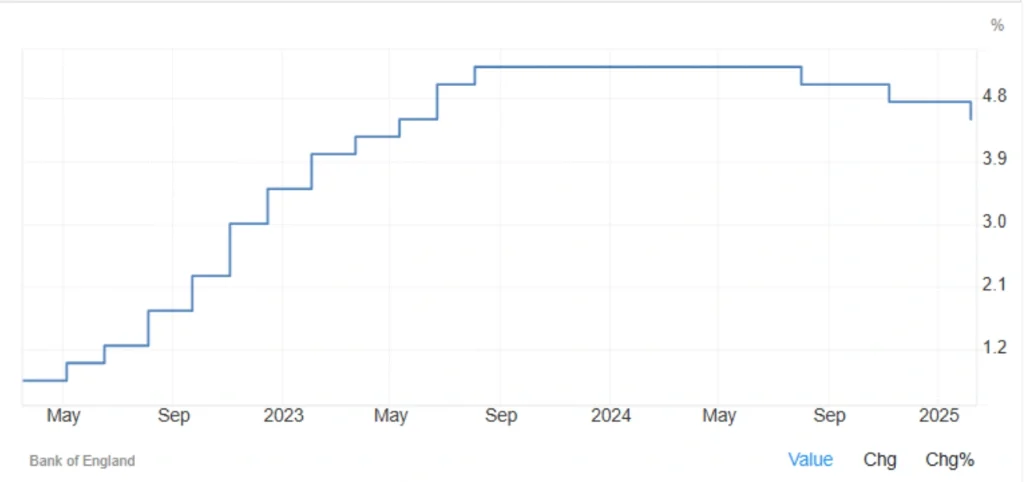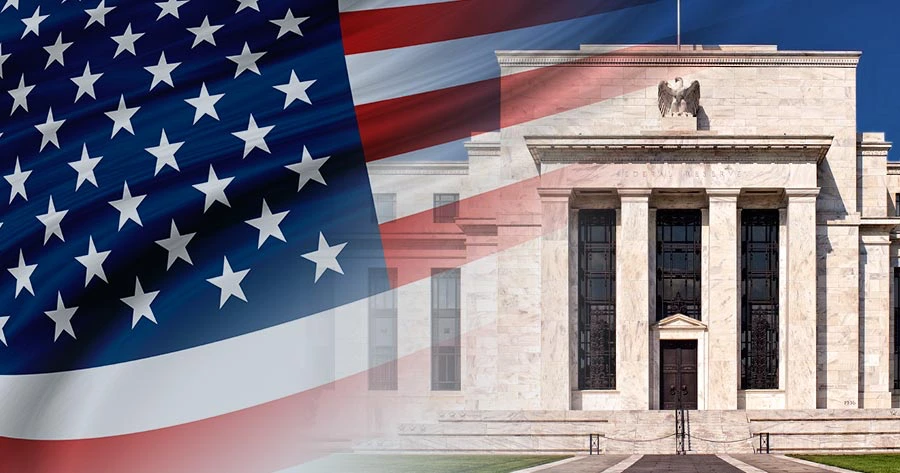
Bank of England Cuts Interest Rates for the Third Time
In its February 2025 meeting, the Bank of England (BoE) made the decision to reduce interest rates by 25 basis points, bringing the rate to 4.5%. This marks the third rate cut since the Bank began its cycle of reducing rates in August 2024. With this move, the BoE signals its ongoing commitment to stimulating economic growth in the face of persistent inflationary pressures.
What Led to the Bank of England’s Decision?
The latest decision aligns with market expectations, with all 9 members of the Monetary Policy Committee (MPC) voting in favor of the cut. This unanimous decision came despite some predictions that one member might oppose it. However, two members of the committee, including Catherine Mann, were in favor of an even more significant 50 basis point cut.
The Bank of England made it clear that this rate-cutting cycle will remain gradual, with concerns about economic growth continuing to outweigh inflationary pressures. The outlook for economic growth has been revised downwards, as economic activity has been weaker than expected, signaling that the BoE may need to take more measures to support the economy.
Read More: UK Budget Deficit Widens, Pressuring Chancellor Reeves
Will the Rate-Cutting Trend Continue?
The decision raises several important questions about the future direction of the UK’s monetary policy:
1. A Policy Shift Toward Growth Support
The rate cut signals that the Bank of England is increasingly concerned about slowing economic growth. By lowering interest rates, the BoE is attempting to make borrowing more affordable for businesses and consumers, which in turn can stimulate investment and spending.
2. Persistent Inflationary Pressures
While the rate cut is aimed at stimulating growth, inflation remains a significant issue. Specifically, inflation in the services sector remains stubbornly high, which could prevent the BoE from making further aggressive cuts in the near future. The balance between fostering growth and controlling inflation will continue to shape the BoE’s future decisions.
3. Market Expectations for Further Cuts
If economic growth remains weak, market expectations are that the BoE may have to continue reducing rates throughout 2025. A further decrease in the interest rate could be a necessary tool to support both businesses and households during a potentially prolonged period of low growth.

The Impact of Interest Rate Cuts on the Economy
Interest rate changes have far-reaching effects on the overall economy. Here’s a closer look at how a rate cut can influence various sectors:
1. Stimulating Economic Growth
When the BoE lowers interest rates, it becomes cheaper for businesses to borrow money, which encourages investment and expansion. Consumers also benefit from lower borrowing costs, making it easier to finance large purchases like homes and cars. In turn, this can help stimulate economic activity and mitigate the effects of a downturn.
2. Supporting the Job Market
Lower interest rates reduce borrowing costs for businesses, allowing them to invest in new projects and hire more workers. By making credit more accessible, the BoE helps support the labor market and prevent a rise in unemployment, which is especially important during times of economic slowdown.
3. Effect on the Housing Market and Currency
A rate cut can also benefit the housing market, as lower interest rates lead to cheaper mortgage repayments, making it more affordable for people to buy homes. However, the British pound may weaken as a result of lower rates, which could drive investors to seek higher returns in other markets.
Conclusion: What’s Next for the Bank of England?
The Bank of England’s decision to cut rates to 4.5% sends a strong signal that it is committed to supporting the UK economy through this challenging period. However, the future of this rate-cutting cycle depends on the ongoing economic situation. If growth continues to falter, further cuts could be on the horizon, but if inflationary pressures persist, the BoE may need to tread carefully in making additional adjustments.
As businesses and consumers brace for the coming months, all eyes will remain on the Bank of England’s next moves, which could have significant implications for economic stability, inflation, and the financial markets.
Share
Hot topics

Federal Reserve’s Challenges to Trump’s New Policies
As the Federal Reserve Open Market Committee (FOMC) prepares for its upcoming meeting, all eyes are on how the Fed will respond to Donald Trump’s latest economic policies. With the...
Read more




Submit comment
Your email address will not be published. Required fields are marked *